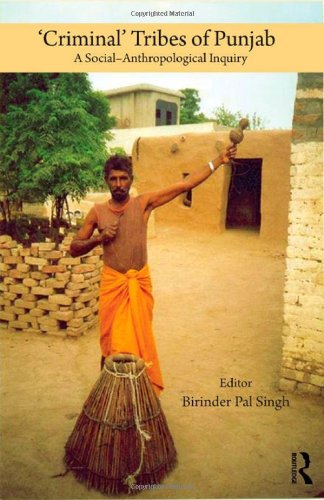

Most ebook files are in PDF format, so you can easily read them using various software such as Foxit Reader or directly on the Google Chrome browser.
Some ebook files are released by publishers in other formats such as .awz, .mobi, .epub, .fb2, etc. You may need to install specific software to read these formats on mobile/PC, such as Calibre.
Please read the tutorial at this link: https://ebookbell.com/faq
We offer FREE conversion to the popular formats you request; however, this may take some time. Therefore, right after payment, please email us, and we will try to provide the service as quickly as possible.
For some exceptional file formats or broken links (if any), please refrain from opening any disputes. Instead, email us first, and we will try to assist within a maximum of 6 hours.
EbookBell Team

4.4
62 reviewsOne of the important projects launched by the British government in the late 19th century was the preparation of a detailed census of the demographic profile of the Indian population across the country. Unable to understand the cultural pluralism that characterizes Indian unity in variety, the census was riddled with problems of definition and categories.
This book is a comprehensive ethnographic account of seven tribes in Punjab, classified as ‘criminal’ by the British administration, in order to make some sense of their alleged criminality: Bauria, Bazigar Banjara, Bangala, Barad, Gandhila, Nat and Sansi. The problem of definition of tribe and the issue of criminality are discussed critically. More importantly, the book shows that, contrary to the claims of the Punjab government, these ‘ex-criminal’ tribes still exist and constitute the poorest of the poor in an otherwise prosperous state. It also addresses to a significant current development of various Denotified Tribes’ Associations in Punjab (and other states as well) that have already started raking their long pending demand of Scheduled Tribe status. It is suggested that if their demands are not suitably addressed to they may take recourse to the Gujjar way of resolving conflict as in Rajasthan.
As tribes the world over are slowly facing extinction, this important book will serve to archive the ethnographies of these ‘ex-criminal’ tribes. An unusual feature of the book is the voices of a few of the elderly in these tribes whose reminiscences about their traditions, beliefs and practices have been documented.
The book will be valuable for those in the fields of sociology, anthropology, social history, tribal and ethnic studies, cultural and folk studies.